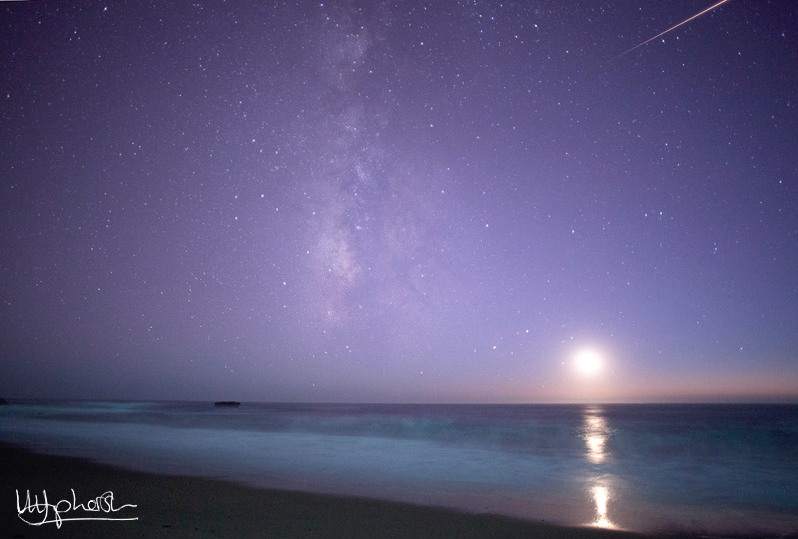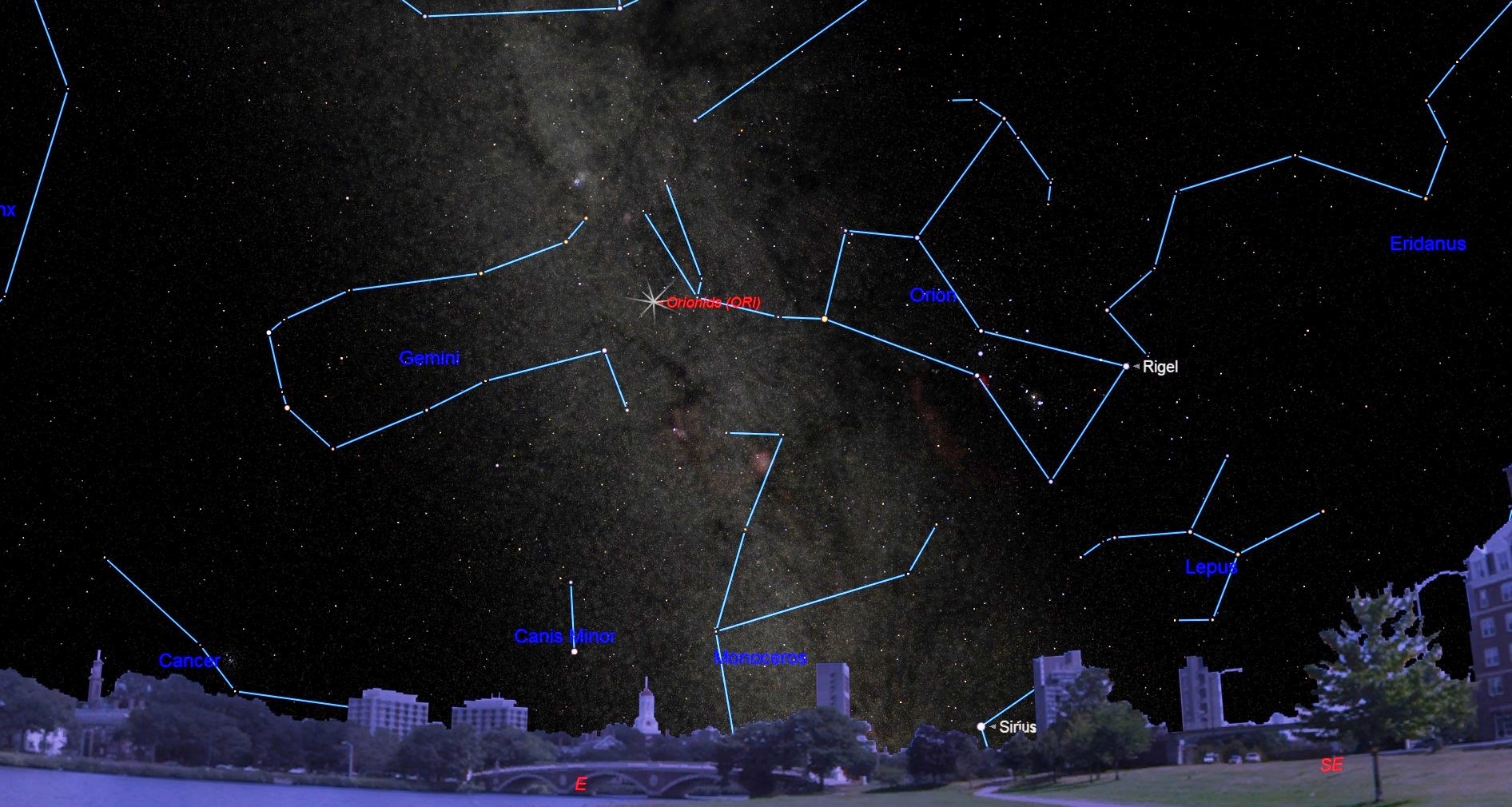Orionid Meteor Shower 2018 Peaks This Weekend with Bits of Halley's Comet: What to Expect
If you're a meteor enthusiast, the year 2018 has been very kind to you. This past summer, the annual Perseid meteor shower reached its peak the day after a new moon, ensuring that no moonlight would hinder those spotting celestial streakers. And looking ahead to December, the Geminid meteor shower, the most prolific of all of the annual displays, will reach its peak when an almost-first-quarter moon is setting during the late evening hours. This will make for excellent viewing conditions.
And coming almost midway between these two popular showers, this weekend brings one of the most reliable meteor events. A sort of lesser version of the summertime Perseids, the Orionid meteor shower should reach its peak activity early on Sunday morning.
These meteors get their name from the fact that they appear to emanate from Orion's upraised club: an area just above and to the left of Orion's second brightest star, Betelgeuse, which shines with a distinctive reddish color. Orion is a winter landmark, so right now, during early autumn, he appears ahead of the Earth in our journey around the sun. The mighty hunter doesn't fully appear until after 11 p.m. local daylight time, when he has completely cleared the eastern horizon. [Orionid Meteor Shower: When, Where and How to See It]

However, don't expect to see much in the way of Orionid activity at that hour. Rather, you should wait until around 2 a.m. in your local time zone, when Orion will have climbed well above the horizon. And just prior to the break of dawn, at around 5 a.m., Orion will appear highest in the sky toward the south. That's when Orionid viewing will be at its best.
Usually, Orionid meteors are rather dim and hard to see from light-polluted urban locations. So, I suggest you find a safe rural location for viewing. Lie down on a long lawn chair or inside a sleeping bag and look overhead, toward the southern part of the sky.
Deceptively good circumstances
Funny thing, though: At first glance, this year looks like a very poor year for viewing this shower. Just three days after these meteors reach their peak, a brilliant full moon will light up the sky from dusk until dawn on Oct. 24th. Nevertheless, you can view the early stages of the display in a dark sky for several mornings prior to Sunday.
Come Saturday night, the moon will be in a waxing gibbous phase against the faint stars of Aquarius and will reach its highest point in the sky soon after 10 p.m. local daylight time. Later, on Sunday morning, when peak Orionid activity is expected, the moon will set just before 4 a.m. So, there will be nearly 2 hours of dark skies between moonset and the first glimmer of dawn, when a single observer might count as many as 15 or 20 Orionids per hour. And because that occurs when the Orionids are at their best, the moon won't seriously affect this year's display.
Get the Space.com Newsletter
Breaking space news, the latest updates on rocket launches, skywatching events and more!
Halley's legacy

We can thank Halley's Comet for this annual, late October show of Orionid meteors. And we can also thank Halley for yet another meteor shower, one that appears in early May: the Eta Aquarids.
Meteoroids are the remnants of a comet's nucleus. When approaching the sun, the frozen material present on the surface of a comet's nucleus — which itself usually measures no more than a mile or two (1.6 to 3 kilometers) in diameter — sublimates, going directly from a frozen to a gas state. In the process, the comet proves to be a cosmic litterbug, leaving in its wake a trail of dust and debris strung out along its orbit. These bits and pieces are so small and brittle, with the consistency of cigar ash, that you could easily crush them with one hand. Each journey exacts a toll of dusty debris that is scattered into space.
Comets are the most primitive members of our solar system, created at the same time as the sun and the planets approximately 4.6 billion years ago. Yet, while everything else has been constantly evolving, comets have essentially remained the same and therefore contain important clues about the origins of the solar system. The reason for comets' unchanged nature is that they spend most of their time roaming in the "deep freeze" of space, far beyond the outer planets. There, the temperature hovers a fraction of a degree above absolute zero, which is minus 459.67 degrees Fahrenheit (minus 273.15 degrees Celsius). In those icy realms, no chemical reactions occur, so the comets remain as they were at the beginning of the creation of the solar system.
Over the last 100,000 years, Halley's Comet has likely made well over a thousand trips around the sun, and at each solar visit, the object has left a calling card of dross along its orbit. Every year, Earth's orbit passes close to the orbit of Halley in October and May, and some of the dust that has shaken loose from the comet intersects the Earth's path in space. That debris rams through our upper atmosphere at 41 miles (66 km) per second, creating the effect of fast streaks, popularly called "shooting stars."
Past studies have demonstrated that about half of all observed Orionids leave trails that last longer than those of other meteors of equivalent brightness. This is undoubtedly connected to the makeup of Halley's Comet; the object produces meteors that start burning up very high in our atmosphere, at around 80 miles (130 km) up, possibly because they are composed of lightweight material. This suggests they came from the diffuse surface of Halley's nucleus as opposed to its core.
I don't know how many of you reading these words actually saw Halley's Comet when it last swept through the inner solar system, during the late winter and early spring of 1986. With a period of 75.4 years, Halley is due to make a return appearance in late July and early August of 2061.
Currently, the average life expectancy of people in the U.S. is 78.7 years; for the United Kingdom, it's 81.6 years, and in Canada, it's 82.1 years. That would seem to suggest that if you were born any time after 1983, there's at least a better-than-even chance you'll be around to greet the "mother of all Orionids" again in the summer of 2061.
As for me, I saw Halley in 1986 at the "advanced age" of 30, so the odds are long that I'll be here when the comet comes around again (you do the math).
So, I guess I'll just have to settle for a view of some of "Halley's children" this weekend.
Editor's note: If you snap an amazing photo or video of the Orionid meteor shower that you'd like to share with Space.com and our news partners for a possible story or image gallery, send images and comments in to spacephotos@space.com.
Joe Rao serves as an instructor and guest lecturer at New York's Hayden Planetarium. He writes about astronomy for Natural History magazine, the Farmer's Almanac and other publications, and he is an on-camera meteorologist for Verizon FiOS1 Lower Hudson Valley. Follow us on Twitter @Spacedotcom and on Facebook. Original article on Space.com.
Join our Space Forums to keep talking space on the latest missions, night sky and more! And if you have a news tip, correction or comment, let us know at: community@space.com.

Joe Rao is Space.com's skywatching columnist, as well as a veteran meteorologist and eclipse chaser who also serves as an instructor and guest lecturer at New York's Hayden Planetarium. He writes about astronomy for Natural History magazine, Sky & Telescope and other publications. Joe is an 8-time Emmy-nominated meteorologist who served the Putnam Valley region of New York for over 21 years. You can find him on Twitter and YouTube tracking lunar and solar eclipses, meteor showers and more. To find out Joe's latest project, visit him on Twitter.









